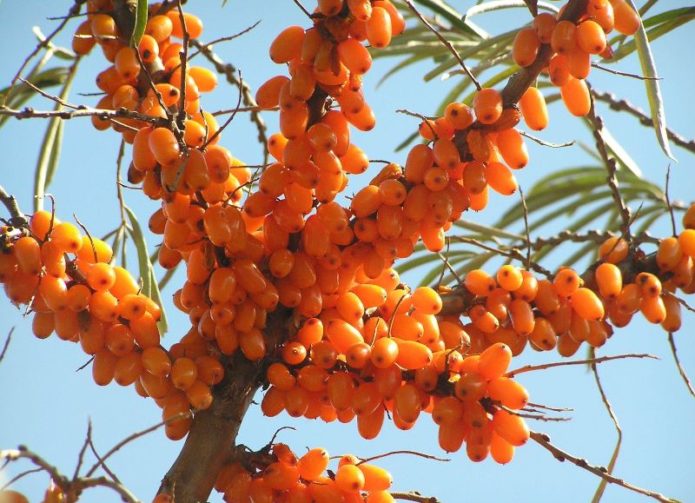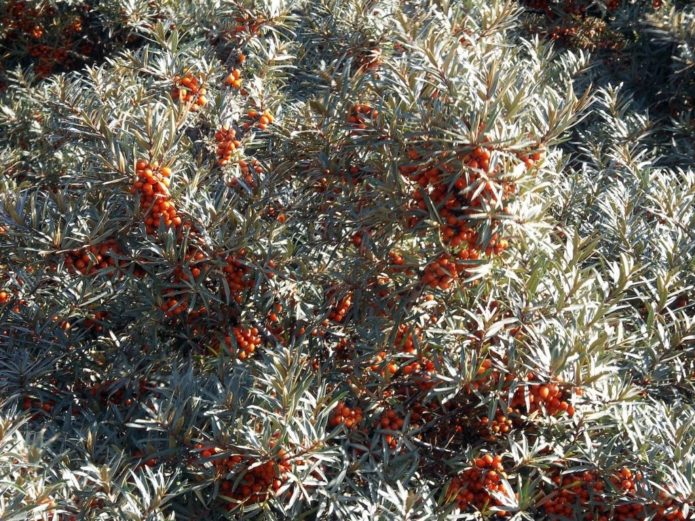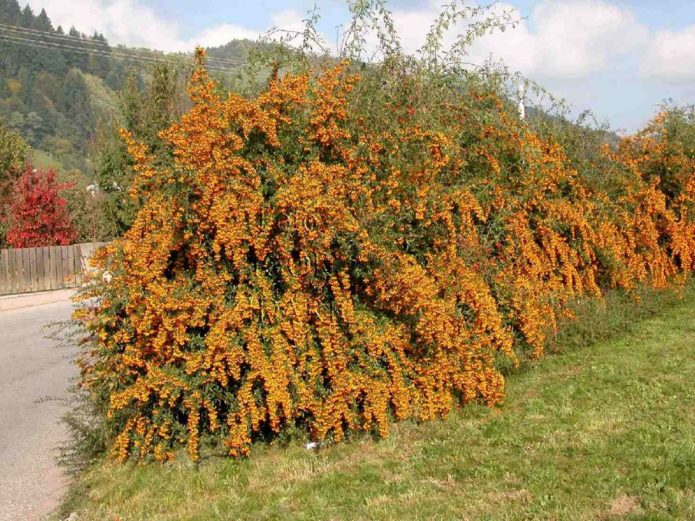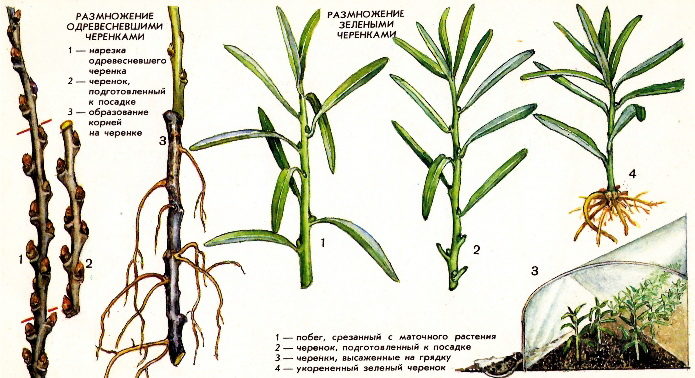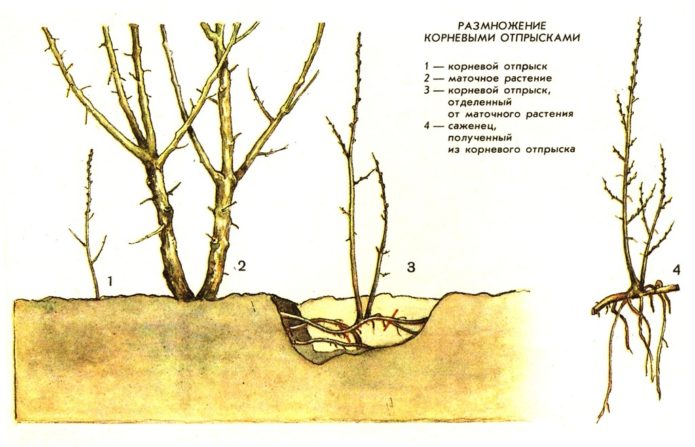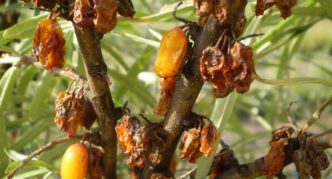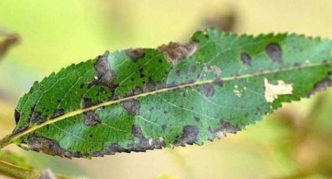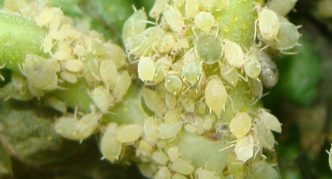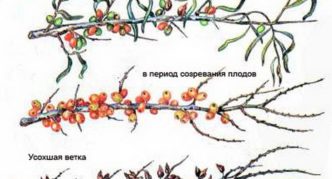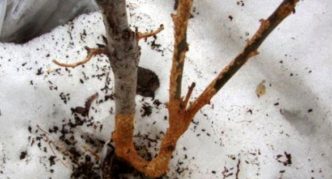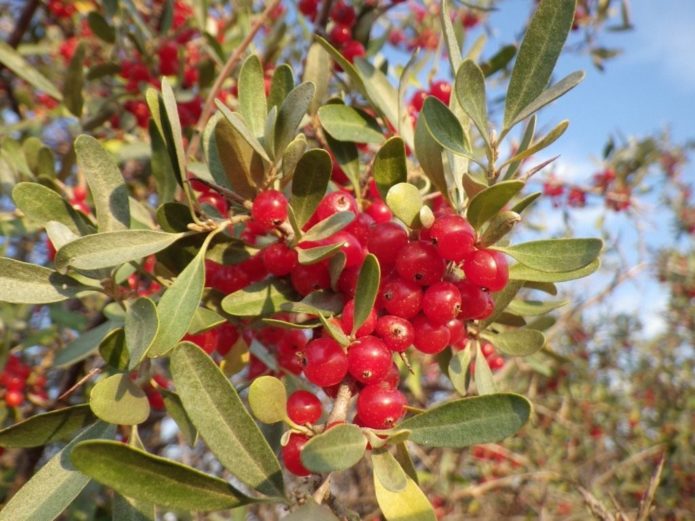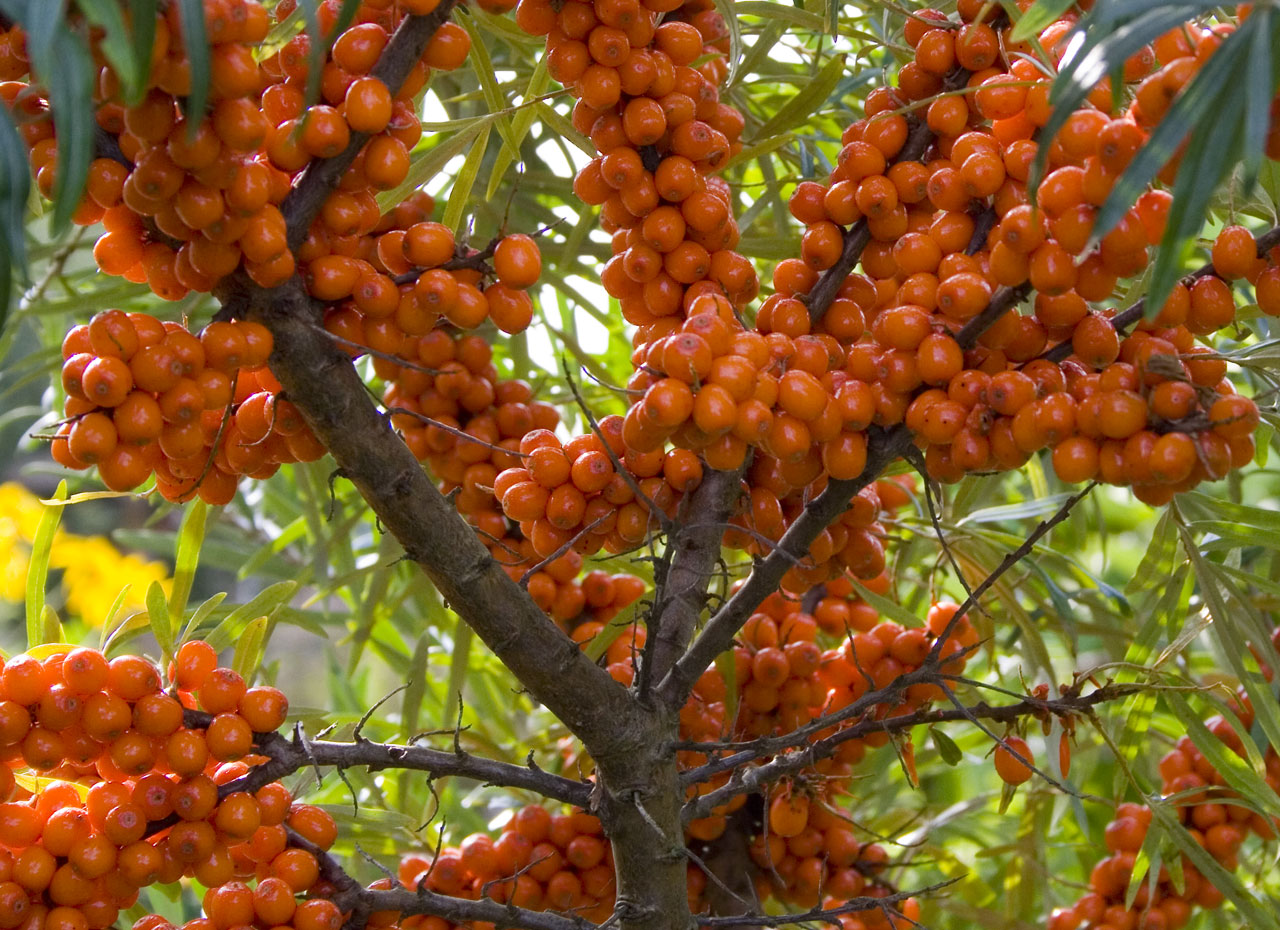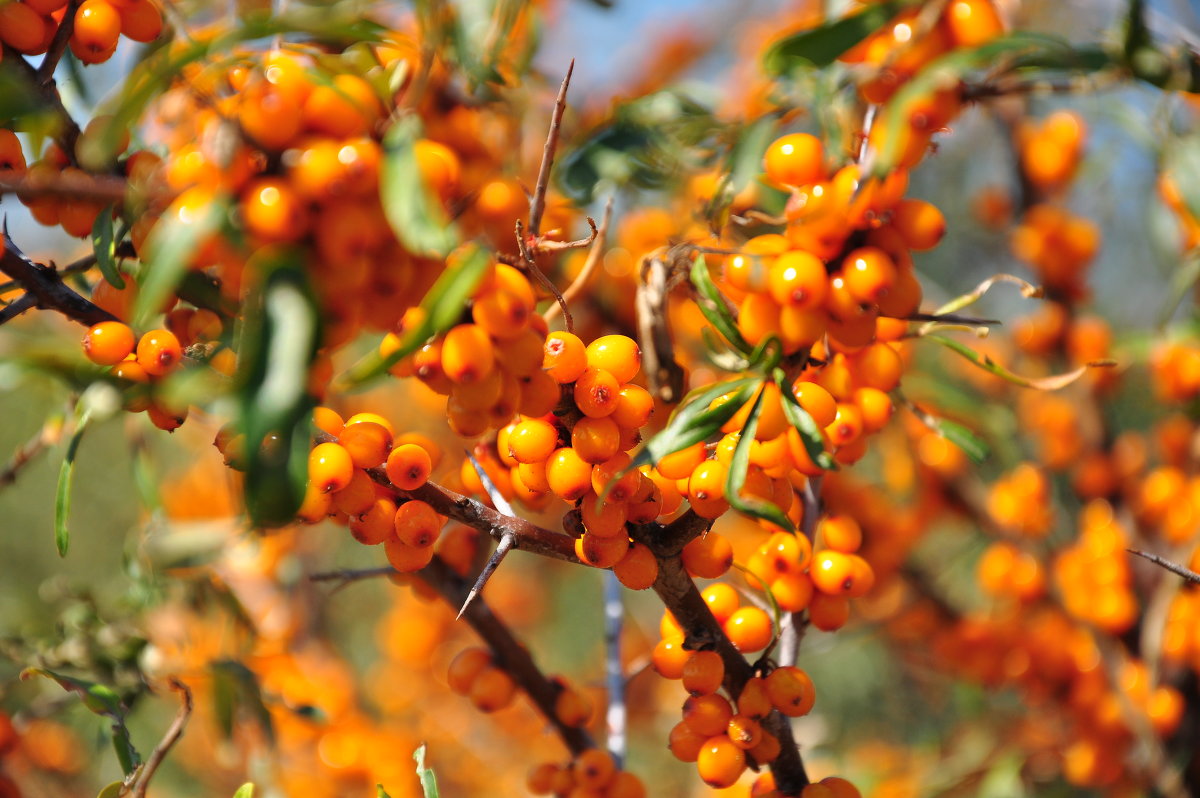Sea buckthorn is a deciduous shrub or tree up to 3–6 meters high. The branches are thorny, the leaves are olive-green above, the bottom is silvery. The bright orange fruits "stick around" the branches, hence the Russian name of this plant. It is valued for its berries, which are medicinal raw materials and are widely used in medicine. On the territory of Russia, sea buckthorn is found, on its basis about 40 varieties have been bred, which can be successfully grown in garden plots.
Content
Sea buckthorn planting rules
Sea buckthorn has many admirers among gardeners, but it is rarely found on personal plots. This is due, perhaps, to some of the difficulties of growing and especially to the difficulties of harvesting fruits.
Site selection
The best predecessors of sea buckthorn on the site are perennial grasses or siderates. When choosing a place for planting, consider the following features of this culture:
- Sea buckthorn prefers sandy and sandy soils, does not grow well on heavy clay soils.
- This is a light-loving plant, so plant it at least three meters away from tall trees and buildings.
- The shrub needs moisture, but the water table must be at least 40 cm from the surface.
- Sea buckthorn has a powerful root system, so you can safely plant it along the edge of a ravine to strengthen the slope and prevent landslides.
- The bushes have thorny branches and a beautiful decorative look, they can be used as a hedge.
Soil preparation
The main work on the site is the autumn digging and thorough cleaning of weeds, the introduction of organic and mineral fertilizers. The rest of the activities depend on the type of soil: sand is added to clay, dolomite flour or fluff lime is added to acidic soil.
Adhere to the following norms for 1m2:
- a bucket of river sand into clay soil;
- 500 g dolomite flour or fluff lime;
- 10 kg of humus;
- 50 g superphosphate.
Areas with a high groundwater table will require drainage, one of the possible options might be:
- Dig grooves 70 cm deep and 30-50 cm wide with a slight slope along the perimeter of the site.
- Install drainage pipes.
- Fill pipes with sand, rubble.
- Lead the end of the pipe into a hole located in the lower corner of the site.
Planting and transplanting
Planting is best done in early spring, and 50 by 50 cm pits should be prepared in autumn. The distance between the seedlings should be 2.5 to 4 meters.
- 200-300 superphosphate and 1 kg of humus are introduced into the pits, mixed with the soil.
- A small mound is formed at the bottom of the fossa, on which the roots of the seedling are spread.
- Gradually they cover the tree with fertile soil, compacting it to eliminate voids. The root collar of the sea buckthorn is buried 3-5 cm in normal soils and 5-7 cm in the lungs.
- The seedling is watered with 2-3 buckets of water and the bite circle is mulched.
The sequence of planting sea buckthorn, it would seem, is the same as that of most garden shrubs. There is, however, a significant difference. Sea buckthorn is a dioecious plant. On some bushes, female flowers grow, which bear fruit, on others - only male flowers, they are intended for pollination and do not form ovaries. You can find out the type of plant by the buds: the male has a lot of scales, sometimes up to 10, of different sizes; for women - 2-3.
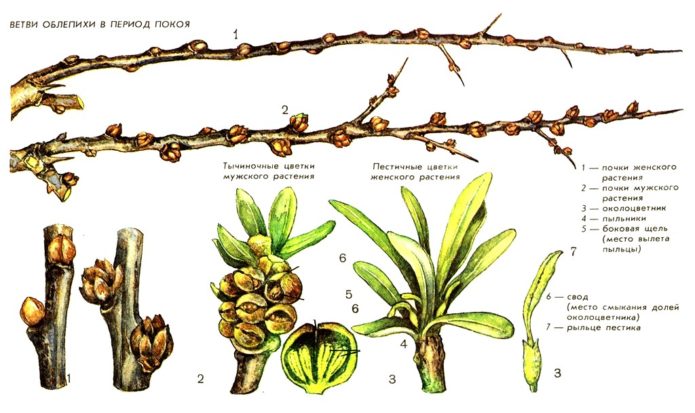
Differences between male and female plants: male flowers form spike-shaped inflorescences at the bases of young shoots, and female flowers appear 2-3 in the axils of the covering scales
To get berries, you need to plant at least one female seedling and one male. It is good to grow sea buckthorn in a curtain (in the middle there is a male bush, and around there are female ones) or in rows (one or two male plants and four or five female plants).
For good pollination, plant male plants with prevailing winds.
Only young bushes can be transplanted, observing the same conditions as when planting. For an adult plant, this is irrational: the root system of the sea buckthorn is very powerful and will be injured. It is much easier and more useful to plant a new seedling.
Subtleties of care
Sea buckthorn requires care throughout the growing season.
In the spring
In the first year of planting, the berry grower needs watering before the first shoots appear, of course, taking into account weather conditions and soil type. In the absence of rain, 3-4 buckets of water are consumed per young plant, and 6–8 buckets per adult.
In early spring, they begin to form and prune shrubs, in May they loosen the ground in the trunks to a depth of 5–7 cm, and remove weeds. It is not worth digging up the soil around the sea buckthorn, since its roots are located close to the surface.
After loosening, you can cover the trunk circle with a dark plastic wrap and leave it for the whole summer, controlling the moisture content of the soil under it.
Simultaneously with loosening, add half a bucket of compost or humus per 1 m2, on poor soils, a whole bucket can be added, where Nitrofoska is added (1-2 tablespoons). Fertilize with urea twice:
- Before flowering - 10-15 g per 1 m2.
- After flowering - 5-10 per 1 m2.
In summer
In late May - early June, intensive growth of leaves and branches begins, the plant during this period is sensitive to soil moisture. Do not allow both overdrying of the earth and stagnant water. Abundant watering will be required twice:
- With the formation of ovaries.
- During the ripening of the fruit.
In the summer, not only cultivated plants grow, but also weeds, which consume a lot of water and nutrients. At this time, 2-3 weeding should be carried out, and it is preferable to take preventive measures, for example, mulching.
At the end of summer, plantings are fertilized with superphosphate (40-50 g per 1 m2). In sandy, sandy loam, as well as in peat soils, add:
- potassium (50 g of potassium chloride per 1 m32);
- organic fertilizers (10 kg per 1 m2).
When scattering mineral fertilizers over the surface of the trunk circle, do not touch the soil at a distance of 15–20 cm from the trunk.
In autumn
Autumn care consists in harvesting and preparing for winter.
- After harvesting the berries, the sea buckthorn is watered abundantly, this will help the root system not to die during frosts.
- Sanitary pruning is carried out.
- The trunks are loosened, combining with top dressing. 1 m2 make:
- 1 bucket of humus;
- 30 g double superphosphate;
- 15 g of potassium chloride.
- On heavy soils, half a bucket of sand or sawdust is applied under each plant.
Male plants are not depleted by the harvest, therefore, much less female plants need feeding.
Video: how to grow sea buckthorn
Trimming and shaping
Pruning should be started two years after planting. For sea buckthorn, like most plants in our garden, several types of pruning are required:
- shaping - gives the desired shape;
- sanitary - for the prevention of diseases;
- anti-aging - increases the yield of old plants.
The formation of sea buckthorn in the form of a bush is possible both on grafted and on own-rooted seedlings. Three shoots are left in the grafted seedling, which should be shortened by 20-25 cm from the ground surface.
In a self-rooted one, you can also use root shoots. All shoots are shortened by 15–20 cm, for 3–4 years, the most developed branches, including newly emerging ones, are chosen for formation.
When the bush reaches 4–5 years old, pay attention to its compactness: remove the stems that grow parallel to the trunk and thicken the crown. If fruiting begins to decrease in an adult plant, branches dry out, then rejuvenating pruning is carried out, removing all shoots older than 3 years.
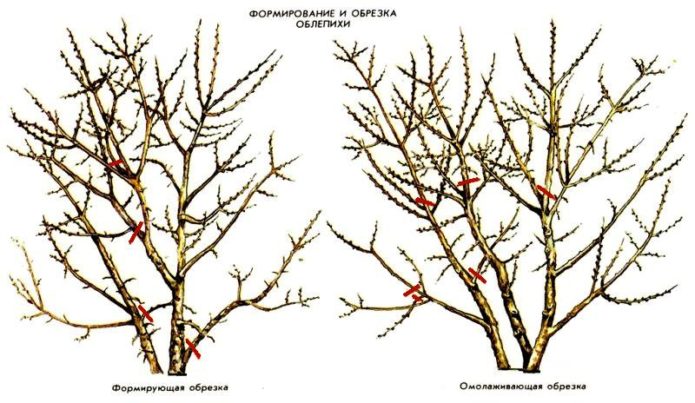
With formative pruning, shoots growing inward are removed from a 4-5-year-old bush, with rejuvenating pruning, branches are cut to three-year-old wood
Sea buckthorn in the form of a tree looks very decorative, takes up less space in the garden. At the same time, the yield is not lower than that of the bush, and the collection of fruits is greatly simplified.
You can give sea buckthorn the shape of a tree, observing the following sequence:
- In the first year of pruning, one of the strongest is chosen from all the shoots, the rest are removed. All extra stems are cut "on the ring".
- The next year, the central shoot is pinched, leaving 4–5 buds, the rest are blinded.
- In the future, the skeletal branches are cut to the same length and all excess shoots, including root suckers, are removed.
Sanitary pruning is done in early spring or fall after leaf fall. This removes all dry, broken, and diseased branches. To improve the growth of the bush, the shoots are regularly pruned "on the ring", for this, the root offspring is carefully excavated with a shovel or scoop and cut flush with the root.

The root shoots must be cut out "on a ring", the buds must not be left, otherwise shoots will form again from them
Reproduction of sea buckthorn
Sea buckthorn reproduces both by seeds and vegetatively: cuttings and root suckers.
Seeds
Seed propagation is not the best way for hobby gardeners. It is mainly used to obtain a new variety. The properties of the mother bush, as a rule, are not preserved, a large number of male plants emerge (up to 50-70%), seedlings often grow spiny and small-fruited.
If you still want to experiment, sowing can be done both in spring and autumn. When sowing in autumn, the seeds undergo natural stratification.
- Prepare grooves 2-3 cm deep in advance, compact the bottom.
- Sow seeds at the end of November: 5-10 seeds per 10 cm.
- Cover with humus.
Spring sowing is carried out in early April with seeds stratified for 30–40 days, shoots appear in one to two weeks. In June, the seedlings are ready to be transplanted to a permanent place.
Stratification is a simulation of winter conditions, which is necessary for the germination of seeds of many plants. For this, the planting material is placed on the lower shelf of the refrigerator.
Cuttings
Cutting is one of the most common ways to obtain a large number of seedlings that fully inherit the properties of the parent plant. Shoots for planting are harvested from 4-5-year-old bushes. Lignified cuttings from 1–2-year-old branches root best in sea buckthorn. It is preferable to cut them from the lower tier of the shrub in late autumn and store until spring under the snow, where the optimum temperature for them will be from 0 to 2 ° C.
- The garden bed is prepared in the fall: they dig up, remove weeds, fertilize the soil, as when planting young plants.
- In early spring, shoots are cut into cuttings 15–20 cm long.
- They are placed in water and kept for 2-3 days.
- They are planted on ridges with an interval of 10 cm. When planting, make sure that 2-3 buds remain on the surface.
- Watering, and to maintain moisture in the first two to three weeks, cover the cuttings with a small greenhouse.
If all conditions are met, a sufficiently developed seedling will be formed by autumn. Green cuttings can be harvested in spring from annual shoots, the difference in care is that for the winter the seedlings will need to be insulated and planted in a permanent place in the spring.
Root offspring
The most effective and easiest way to propagate sea buckthorn is by offspring, which in many varieties appear in large quantities. The only negative is that the method cannot be used for grafted plants, as the properties of the stock will be preserved. To obtain planting material, you need to separate the offspring with a shovel from the mother bush in the spring, and by autumn the seedling will be ready for transplantation.
Disease and pest control
Forest mice and voles in winter can gnaw the bark of the trunk and branches of the lower layer, which are under the snow. Sea buckthorn also suffers from pests and fungal diseases.
Table: Protection against diseases and pests
| Diseases and pests | Signs of defeat | Control and prevention measures |
| Rodents (voles, mice) | Damage to the bark of trunks and main branches |
|
| Green sea buckthorn aphid | Twisting, yellowing and death of leaves | Spraying with infusions:
|
| Sea buckthorn fly | Darkening and drying of berries |
|
| Scab of shoots, leaves and fruits |
|
|
| Fusarium fruit wilting |
|
|
Photo gallery: sea buckthorn diseases and pests
- Sea buckthorn fly uses fruits to feed and hatch larvae
- Scab infects leaves and berries, can completely destroy the plant
- Green sea buckthorn aphid sucks juices from young leaves
- Fusarium leaves and fruits dry out and fall
- Mice gnaw the bark at the bottom of trunks and branches, which leads to the death of bushes
Harvesting
The yield of an adult plant often reaches 20-25 kg per bush. Collecting so many berries is a rather time-consuming task. The most common tips to make harvesting easier:
- Use a small container suspended from your neck to free your hands.
- On an adult plant over 6 years old, it is permissible to cut the berries along with the branches (by 1/2 or at most 2/3 of the crown), this will also be a rejuvenating pruning at the same time.
To facilitate the collection of sea buckthorn, various devices are often used, including those made by hand.
Video: a device for collecting sea buckthorn
Features of cultivation of sea buckthorn
To grow a healthy berry and get a good harvest from it, you need to take into account the peculiarities of cultivating different types of sea buckthorn, as well as the climatic conditions in the regions where the berry grows.
For beginners
Novice gardeners should avoid the main mistakes when growing sea buckthorn. To do this, you should heed the following tips:
- Growing success begins with the selection of seedlings. Purchase them in garden centers, having previously studied the properties of the varieties.
- If you want to propagate sea buckthorn growing in the garden, do not forget that the offspring from the grafted plant do not retain the properties of the mother bush and will not meet your expectations. If you do not know whether grafted sea buckthorn or self-rooted, use the propagation method by cuttings.
- A common mistake is to dig deeply around the trunk circles, which damages the sea buckthorn roots located close to the surface.
Varieties of sea buckthorn
Self-fertile sea buckthorn is an ideal species for home gardens, it does not require planting male-type plants. Harvesting the fruits of this variety is a little easier, since the berries grow on a small stalk, and the bush itself is low - up to two and a half meters.
Shepherdia silvery is a plant of the same family as sea buckthorn. It has similar leaves, but the berries are colored red. For its outward resemblance, it is called red sea buckthorn, and in terms of vitamin C content, it even overtakes its relative. Cultivation of Shepherdia differs little from the cultivation of buckthorn and cultivars of sea buckthorn derived from it. Of the features, it can be noted that it is less demanding on soils; it can also grow on poorer soils. Shepherdia fruits are much easier to collect, they can even be shaken off the branches onto a spread film.
The taste of chefedriya berries is bitter-sour, so they are used mainly in processed form.
In different regions
On the territory of Russia, sea buckthorn grows wild in the European part, in the Caucasus, in Siberia, in Altai. Numerous cultivars bred on the basis of sea buckthorn are suitable for cultivation on the territory of Russia and Ukraine almost everywhere. Due to their exceptional frost resistance (withstands temperatures down to -45 ° C), they can be grown in the North-West and Central regions, including in the Moscow region. When cultivating sea buckthorn in the Kuban and Ukraine, one should take into account its need for moisture: during dry periods, it needs abundant watering.
Sea buckthorn is a valuable multivitamin plant that will take its rightful place in your garden. Having paid a little attention and time to caring for the plant, you can enjoy a rich harvest of tasty and healthy berries.
